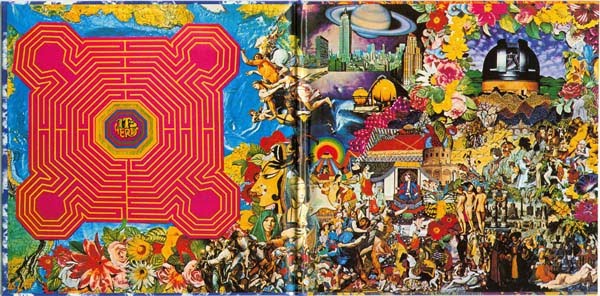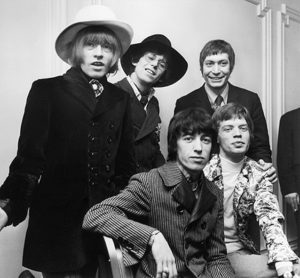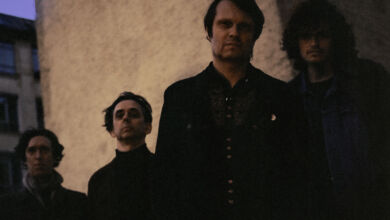
- Re- Assessed: Their Satanic Majesties Request
This piece is written to silence the haters, coax the doubters and welcome the uninitiated to the wonder that is the Rolling Stones most controversial album; 1967’s Their Satanic Majesties Request.
Before assimilating the hype, one must first gain an understanding of how Mick and Keith came to write such an unyielding and experimental collection of songs. The Beatles aside, in 1967 The Rolling Stones were commercially speaking, untouchable. It’s been well documented by both parties that Mick Jagger and John Lennon would regularly conspire to stagger their prospective releases to ensure maximum chart impact. And so it was, between the May 1963 and January 1967 the Rolling Stones notched up a total of 15 UK hit singles, nine of which went to Number One. These statistics are staggering by anyone’s standards, especially in light of the fact that Jagger and Richards had only been writing their own material for just over 30 months.
It’s useful to view TSMR as a book-end to their nascent songwriting period, as the Stones’ entire original output up to this point, had been written and recorded on the road. A constant, gruelling touring schedule since 1963 had paid off commercially, but in turn burned them out. This forced the band to take a break that would give them space and via certain recreational activities; allow their creative juices to flow in a whole new direction.
The sheer rate at which the Jagger/Richards song-writing partnership blossomed during this time was reminiscent of a hurtling locomotive – and there seemed little sense of this slowing down. Listen to the singles ‘The Last Time’ (Feb 1965); ‘(I Can’t Get No) Satisfaction’ (June 1965); and then ‘Paint It Black’ (May 1966), and you can clearly hear the advances being made – both in terms of production and song craft. 1966 would prove to be a commercial peak for the Stones in terms of single sales. However, behind the scenes, their internal affairs painted a far more complex picture.
Manager/Producer Andrew Oldham was a key element in masterminding their meteoric ascent to stardom, but he grew increasingly frustrated with the band’s work ethic in the studio and distanced himself from the recordings of TSMR. Alternatively, depending upon which camp you choose to believe – the Stones believed they had outgrown him. Oldham was a true master in marketing the band and manipulating the media to their advantage, but he lacked the studio prowess required to keep up with the band’s increasingly groundbreaking compositions. This lead to TSMR becoming the first album not credited to Oldham as producer, and subsequently to the Stones finding new management in the form of the notorious Allen Klein.
When I think of this period, I immediately picture the Summer Of Love; a hedonistic period of free thinking, free love and psychedelic drugs. In hindsight, it’s easy to think everyone was taking LSD. However, truth be told, in late 1966 only the switched-on elite were experimenting with such brave new forms of mind-expansion. In addition to various socialites and key figures of the art world, it was the rock hierarchy who really embraced the drug. It would be these hallucinogenic experiences that gave birth to some of the most highly respected and forward thinking albums of all time. It would also be these very same experiences that led the recently defunct, News of the World in to run a three part article in January 1967, that trumpeted, ‘Pop Stars and Drugs: Facts That Will Shock You’.
Such contrived moral outrage soon ensured that matters very quickly became rather dark for The Stones from this point. Within three months, Mick, Keith and Brian Jones would find themselves arrested for drug possession as a campaign of raids gathered momentum. The party seemed to be over. ‘When we got busted at Redlands, it suddenly made us realise that this was a whole different ball game and that was when the fun stopped,’ explained Richards. ‘Up until then it had been as though London existed in a beautiful space where you could do anything you wanted.’
During this same period, while on holiday in Morocco (apparently taken to escape the madness at home) Richards won/stole the affections of Brian Jones’ girlfriend, the beautiful and enigmatic, Anita Pallenberg. The damage this caused to relations between Jones and Richards was irreparable. As Jones’ insecurities dramatically increased, so too did his drug intake and – not coincidently – his creative input diminished. Shortly after the release of Satanic Majesties, the band jettisoned Jones, by then a ghostly shadow of his former self.
Pending court cases, drug busts, heartbreak, changes in management and an abundance of LSD – most bands would have split. But this fostered a siege mentality within the group, and their resilience and sheer determination spurred them on to achieve new creative highs. This became evident with the August 1967 release of the single ‘We Love You’, which was the public’s first taste of a post-‘Ruby Tuesday’ Rolling Stones. The song was a ‘thank you’ to their fans for the loyal support they had shown since the drug bust and subsequent moral panic earlier in the year. It knowingly begins with the crash of prison doors slamming shut; this is followed by a brooding and urgent piano riff by the fabulous Nicky Hopkins. The strong Moroccan influences wrap around a defiant message to the British authorities; ‘we don’t care if you hound we or lock the doors around we’. Mick’s tongue firmly in his cheek as he drawls ‘We love yoooou’ to The Man.
Both John Lennon and Paul McCartney were in the studio at the time and lend their sweet harmonies to the lysergic-spiked chorus. Reaching Number Eight in the charts, it served as an outlet for the Stones’ seething frustrations and also a rye wink to the Beatles in light of their recent ‘All You Need Is Love’.
Their Satanic Majesties Request was released four months later, in December 1967. Greeted by many critics with cynicism, disdain and disappointment it nevertheless reached Number Three in the UK. Earlier in the year, the Beatles had issued Sgt Pepper to overwhelming
adoration and it was no secret that the Stones were directly influenced by the album. But let us not forget – This was 1967, acid was in the air and the Stones had time on their side – they also wanted to reflect the times, their way. TSMR is littered with in-jokes and peppered with a frivolity not previously associated with the no-nonsense Stones, before or since. But it is this fact that makes the album so special.
The album arrived wrapped in a sleeve featuring a cover image shot by photographer Michael Cooper, who had also been involved in creating the iconic Sgt Pepper sleeve art. Cooper was very much part of the Stones inner circle, so he was an obvious choice. He flew the band out to New York and shot what became the world’s first 3-D LP cover. With Mick sat crossed legged dressed as a wizard and the rest of the boys flanking him in equally flamboyant attire, it is a striking graphic. The original 3-D effect gave the impression the band were turning away as you tilted the sleeve, but due to high production costs, this was soon scrapped for a cheaper and more conventional version. Cooper had intended to direct the movie adaptation of A Clockwork Orange that same year, casting Mick as lead character, Alex and the rest of the Stones as his droogs. Although this didn’t pan out, Cooper certainly left his mark in rock history but sadly died of a heroin overdose six years later, in 1973.
Unsurprisingly, the Stones drew catcalls for looking a little daft in their ‘fancy dress’. Given that the album itself wasn’t released until Christmas of 1967 and in the context to the ever changing times psychedelia was virtually over. Their Satanic Majesties Request had taken the best part of a year to record, which for the times; was a glacial recording rate. Whichever way you looked at it The Rolling Stones now appeared to be very much behind the pack, instead of leading it. It’s also worth noting if you look close enough at the cover, you will spot the heads of the Fab Four. And as hard one may try (in whichever state you may be in), the cosmic maze that graces the inside cover is designed to be impossible to complete.
Opening with a discordant piano and a wail of mariachi horns, ‘Sing This All Together’ (like the album as a whole) always divides critical opinion. Is this new Stones sound exploring new expansive sonic territories or are they just unfocused and befuddled by 1967’s drug du jour? ‘There’s a lot of rubbish on Satanic Majesties,’ opined Jagger. ‘Just too much time on our hands, too many drugs, no producer to tell us, “Enough already, thank you very much, now can we get just get on with this song?” Anyone let loose in the studio will produce stuff like that. There was simply too much hanging around. It’s like believing everything you do is great and not having any editing.’
Like or loathe the opening number, very few can dismiss the subsequent ‘Citadel’. It’s the hardest rocking track on the album, with very little in the way adornment – at least by this album’s standards. The lyrics are somewhat obtuse, leaving the listener transported to a place that may not be of this earth. Never has a city landscape felt so dark and alien yet so very inciting.
Track three, ‘In Another Land’ was written and sung by bassist Bill Wyman. Never one to get too involved with drugs, Wyman wrote the song to poke fun at the rest of the band. He’d not enjoyed working at their slow pace in the studio, nor had he warmed to the fact they were
seemingly exiting on another plain. His deadpan vocals, fed through a series of effects are a perfect contrast to that of Mick’s, yet it’s still very 1967: Yes this is the Rolling Stones, but we don’t have to take it all so seriously.
‘2000 Man’, provides a lighter touch to an otherwise densely psychedelic collection. It’s not a stand out track, however you may wish it was longer when it segues into ‘Sing This Altogether (See What Happens)’. This is just under eight minutes of what amounts to no more than a droning raga-influenced jam, it’s pretty difficult to digest, and I can imagine many getting up out off their beanbags to turn the record over each time it starts. However, what it does go to prove is that the Stones were not merely impersonating the Beatles but instead painting a far darker and foreboding version of Psychedelia.
Side Two opens the jubilant and celebratory ‘She’s A Rainbow’. Despite the generally upbeat tone, this track opens and closes with sinister soundscapes that perfectly imply the darkness surrounding both the band and the Summer Of Love. However, when Mick tells us all that ‘She comes in colours everywhere’ there is very little doubt that the horny young singer has witnessed these wonderful psychedelic orgasms first hand. The playfulness of the ‘Oo la-la-la’ backing vocal are not those of R&B purists – this is a band looking forward with the prime intention of turning their audience on to a new way of seeing things, and they succeed in a very big way.
Neither a single, nor particularly well-known, ‘The Lantern’ is an often overlooked gem. It blends Richards’ country-tinged acoustic guitar with Nicky Hopkins’ tinkling piano to achieve a groove all of its own. The blissed-out vocal and unusual time signature ensures that the song rewards repeated listens.
Like ‘2000 Man’, ‘The Gomper’ is hardly representative of Jagger/Richards at the peak of their powers. Although the first two minutes could be described as inoffensive filler, the remaining three minutes descend into an unfocused and not particularly pleasant or clever jam.
Following such a dire racket comes the album’s crowning glory – Not only the strongest song on the album, but also a kind of creative peak for the songwriting partnership. The lyrics to ‘2000 Light Years From Home’ were written by Mick during his incarceration in Brixton Prison. But it’s the overall atmosphere coupled with the lyrics that make the whole listening experience so very otherworldly. Brian Jones may have contributed very little guitar on this album, but ever the multi-instrumentalist, he plays a hauntingly sinister Mellotron that sounds as if one of Lucifer’s henchman were plucking strings. This track alone serves as an interesting cul-de-sac in comparison to the rest of the Stones’ repertoire – never in their career would the revisit such unexplored territory.
Closing track, ‘On With The Show’ represents a very direct nod to the vaudevillian flavours of that summer’s smash, Sgt Pepper. Mick adopts the ridiculous accent of an English gent, while I can only assume the rest of the band went to the pub. It’s a disappointing close to a sometimes incredible/sometimes curious collection.
44 years ago, the Rolling Stones released the bubblegum pop one-two punch of ‘Let’s Spend The Night Together’ and ‘Ruby Tuesday’. Dissatisfied with the path their songwriting was taking, they chose to steer away from such poppy realms. Having achieved this with the often misunderstood Satanic Majesties, they unknowingly used their next single, ‘Jumping Jack Flash’ as a springboard that would catapult them out of this crazy psychedelic world and into their very own hand crafted blend of Dartford Delta Blues.
The four albums that followed (Beggars Banquet, Let It Bleed, Exile On Main Street, and Sticky Fingers) remain my favourite four consecutive albums by any artist. The Rolling Stones had required a bridge to get them from the catchy-but-lightweight juvenility of ‘Ruby Tuesday’ to the untouchable maturity of ‘Sympathy For The Devil’ and Beggars Banquet. Their Satanic Majesties Request provided this – Dark, experimental and very necessary.
Originally posted 2011-08-16 12:15:09. Republished by Blog Post Promoter








